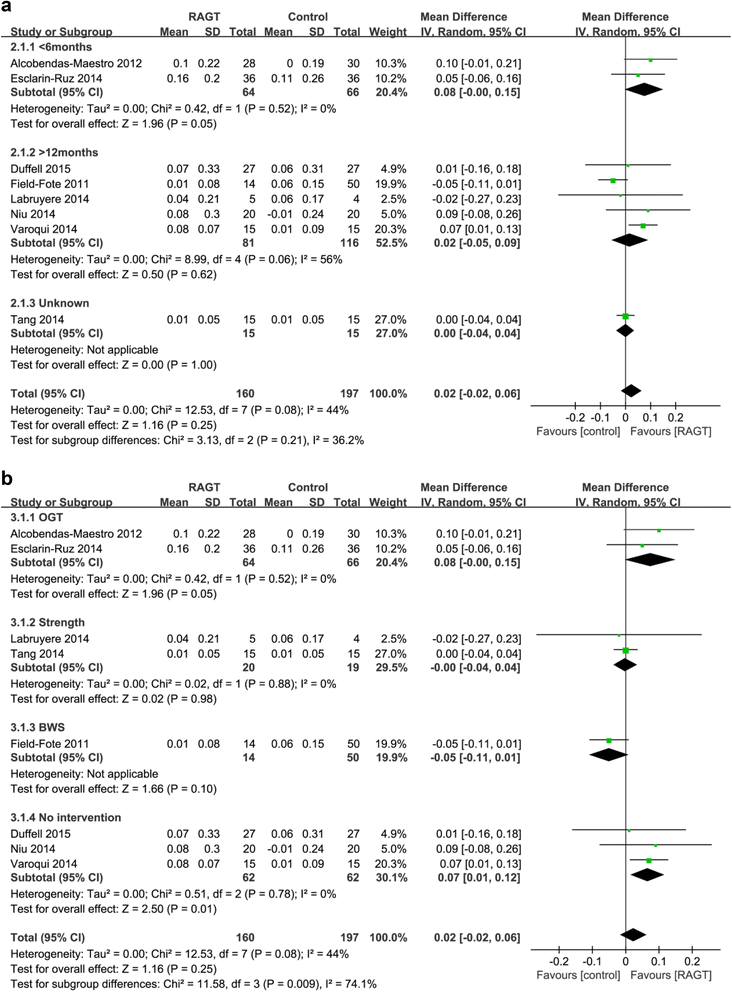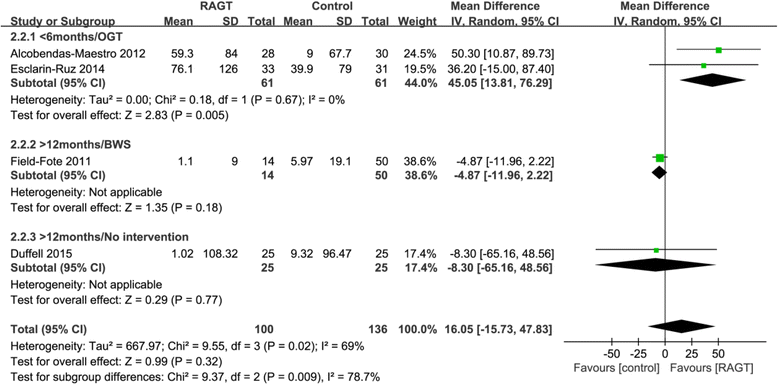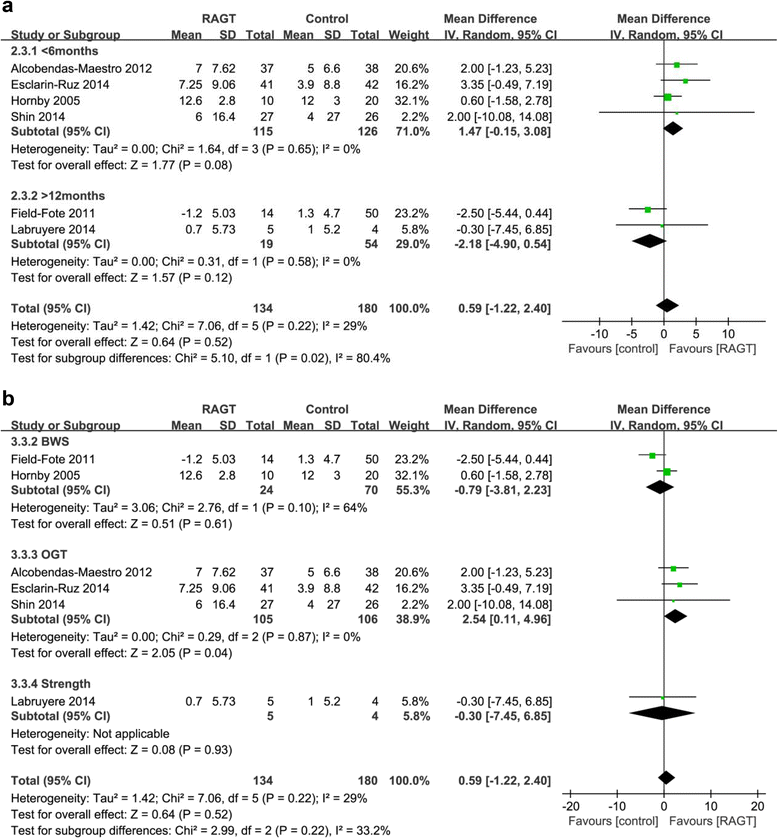Robot-assisted gait training (Lokomat) improves walking function and activity in people with spinal cord injury: a systematic review
- PMID: 28330471
- PMCID: PMC5363005
- DOI: 10.1186/s12984-017-0232-3
Robot-assisted gait training (Lokomat) improves walking function and activity in people with spinal cord injury: a systematic review
Abstract
Robot-assisted gait training (RAGT) after spinal cord injury (SCI) induces several different neurophysiological mechanisms to restore walking ability, including the activation of central pattern generators, task-specific stepping practice and massed exercise. However, there is no clear evidence for the optimal timing and efficacy of RAGT in people with SCI. The aim of our study was to assess the effects of RAGT on improvement in walking-related functional outcomes in patients with incomplete SCI compared with other rehabilitation modalities according to time elapsed since injury. This review included 10 trials involving 502 participants to meta-analysis. The acute RAGT groups showed significantly greater improvements in gait distance, leg strength, and functional level of mobility and independence than the over-ground training (OGT) groups. The pooled mean difference was 45.05 m (95% CI 13.81 to 76.29, P = 0.005, I2 = 0%; two trials, 122 participants), 2.54 (LEMS, 95% CI 0.11 to 4.96, P = 0.04, I2 = 0%; three trials, 211 participants) and 0.5 (WISCI-II and FIM-L, 95% CI 0.02 to 0.98, P = 0.04, I2 = 67%; three trials, 211 participants), respectively. In the chronic RAGT group, significantly greater improvements in speed (pooled mean difference = 0.07 m/s, 95% CI 0.01 to 0.12, P = 0.01, I2 = 0%; three trials, 124 participants) and balance measured by TUG (pooled mean difference = 9.25, 95% CI 2.76 to 15.73, P = 0.005, I2 = 74%; three trials, 120 participants) were observed than in the group with no intervention. Thus, RAGT improves mobility-related outcomes to a greater degree than conventional OGT for patients with incomplete SCI, particularly during the acute stage. RAGT treatment is a promising technique to restore functional walking and improve locomotor ability, which might enable SCI patients to maintain a healthy lifestyle and increase their level of physical activity.
Trial registration: PROSPERO (CRD 42016037366 ). Registered 6 April 2016.
Keywords: Gait; Locomotion; Physical therapy; Robotics; Spinal Cord Injuries.
Figures







References
-
- Hu XL, Tong KY, Li R, et al. Effectiveness of functional electrical stimulation (FES)-robot assisted wrist training on persons after stroke. Conf Proc IEEE Eng Med Biol Soc. 2010;2010:5819–5822. - PubMed
Publication types
MeSH terms
LinkOut - more resources
Full Text Sources
Other Literature Sources
Medical
Miscellaneous

